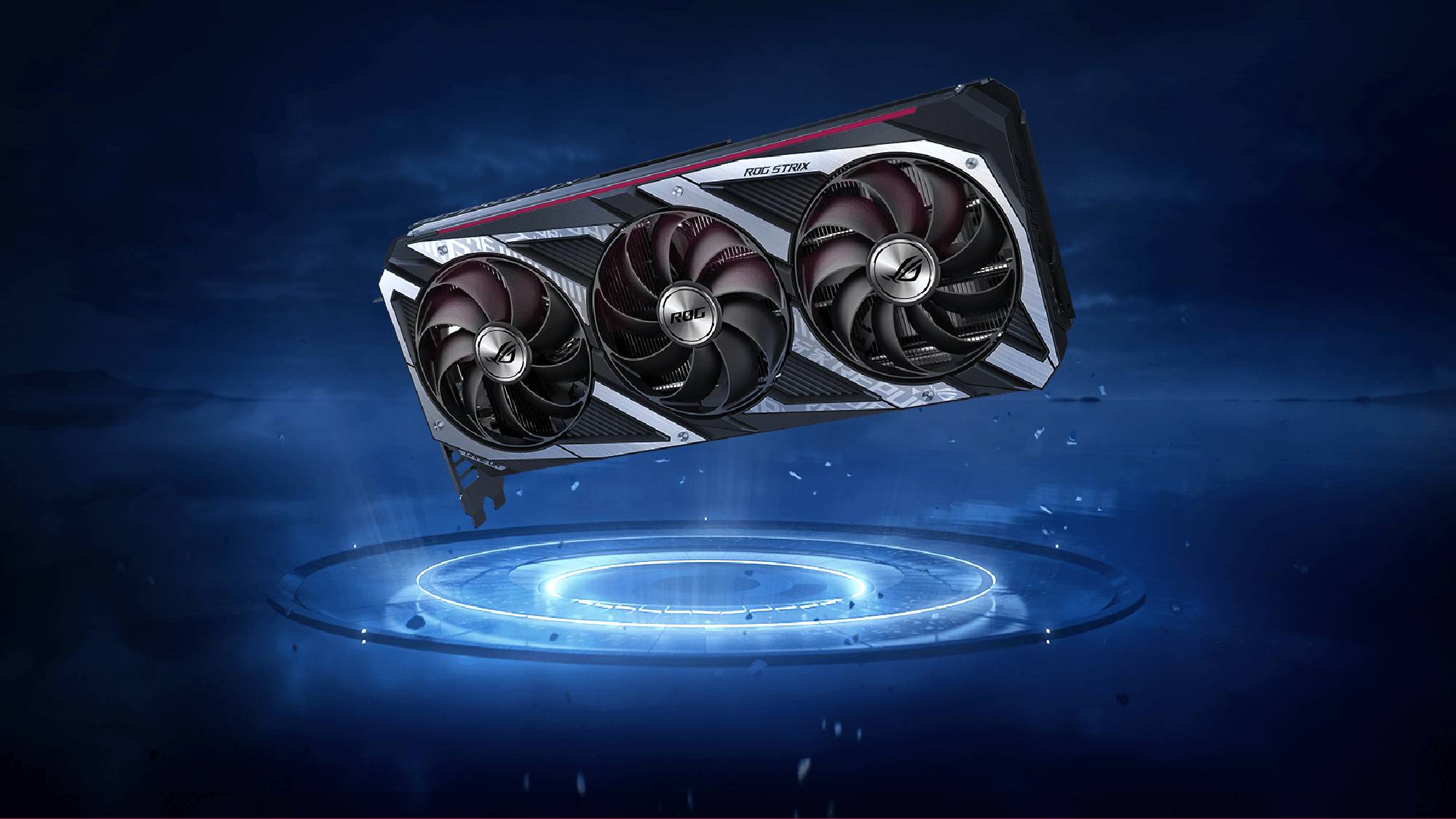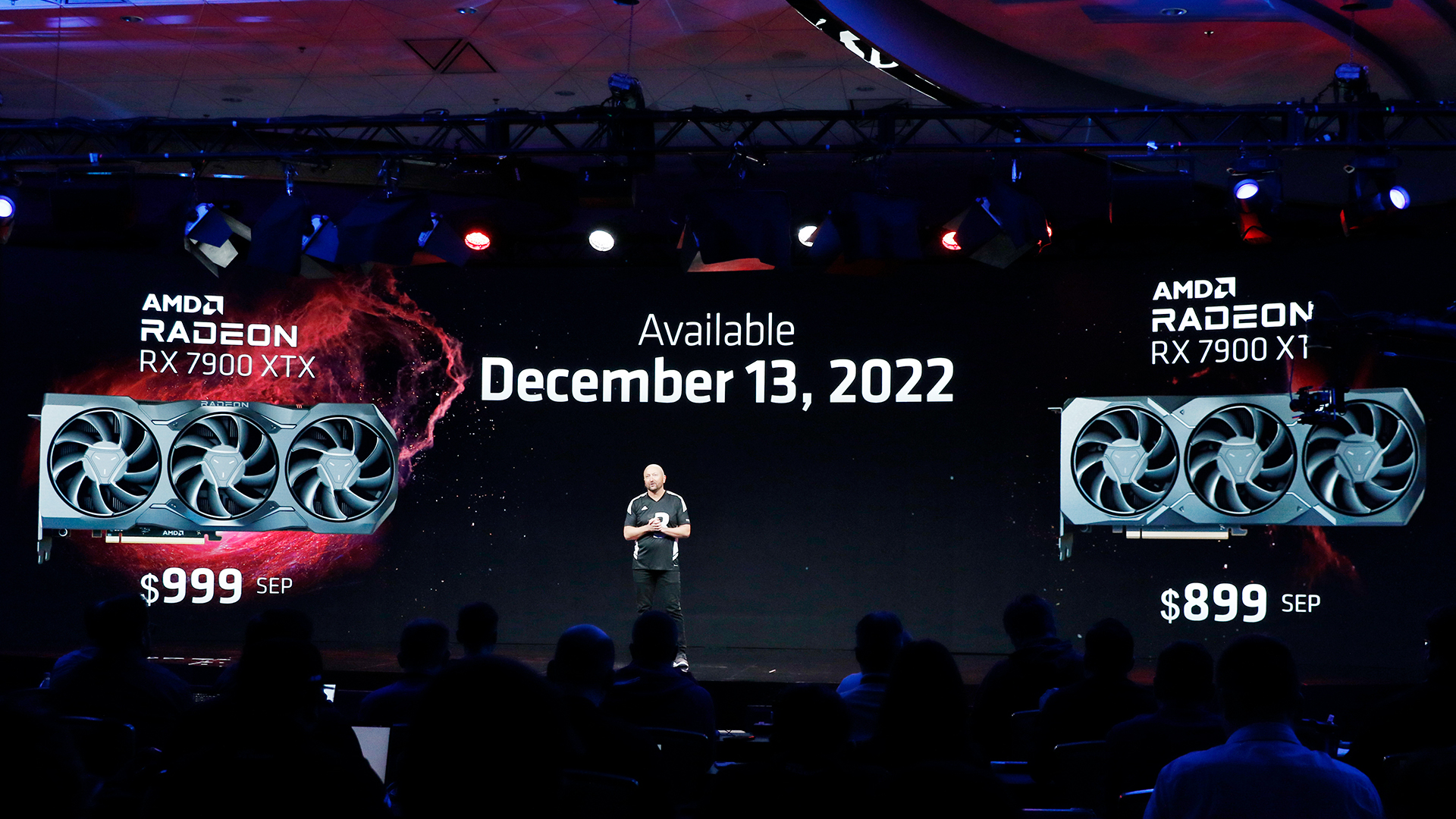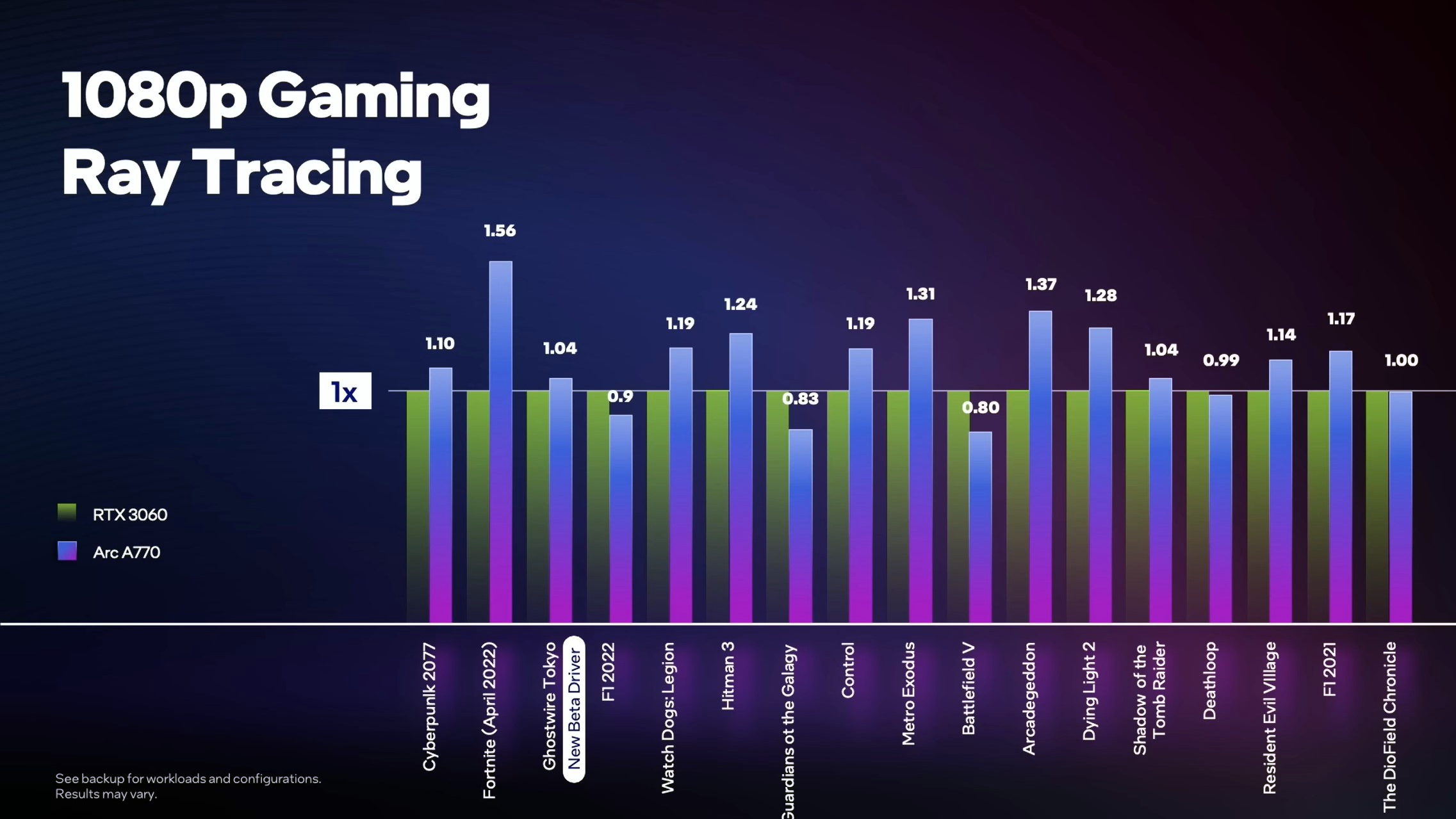Nvidia's cruising for a bruising in 2023: Here's why

It's been a pretty good year for graphics cards, especially if you're Nvidia.
AMD and Intel grabbed their share of headlines, but it was Nvidia's name that cropped up more often than not during the supply-and-demand shake-up that swept through the GPU market over the last two years. Of course, more often than not we were talking about how expensive Nvidia's graphics cards could be, especially at the height of the global chip shortage.
Thankfully graphics card prices finally started to slip down out of the stratosphere in 2022, much to the relief of many. This was the year I finally started to seriously consider building a new gaming PC, and I know I'm not alone. But as I look ahead to 2023 and plan out what GPU to buy when, I have to think about what came out this year and what the big card companies are likely to do in the wake of 2022.
If you, like me, are wondering what happened this year in GPUs and whether you should buy one now or wait until 2023, read on—here's a brief rundown of what happened to the GPU market in 2022, and what to look for in the year ahead.
Nvidia's on top and begging to be challenged
Nvidia started 2022 riding high, in large part because of the global supply chain issues caused by the COVID-19 pandemic. Its GeForce 30-series cards started shipping in 2020, at the height of COVID-19 quarantines, and the entire line was a hot commodity from day one. Scalpers and crypto fiends were the scourge of anyone trying to buy a new RTX 3080 in 2020, and similar problems persisted all the way through 2021 and well into 2022.
In short, if you wanted to buy a new Nvidia GPU at the regular retail price it was almost impossible—until a few months ago, when new 30-series cards started to show up on store shelves in quantities that made it possible for a normal person to buy one for a less-than-extravagant price.

Around the same time (October 12th, to be specific) Nvidia launched its Nvidia GeForce RTX 4090, the first of the 40-series cards. This is the current top-of-the-line GeForce GPU, and yet when you look up where to buy the Nvidia GeForce RTX 4090 you have no trouble finding it for MSRP at retailers like Best Buy.
Get instant access to breaking news, the hottest reviews, great deals and helpful tips.
That's great news for folks with a lot of cash to burn on a new GPU, but it seems like less than great news for Nvidia, who for the last year or two has seen its new GPUs sell out at speeds we haven't seen since Nintendo launched the Wii. But now it seems the global supply of GPUs has caught up to demand, at least for the moment, and that suggests Nvidia's GPU fortunes may fall a bit in 2023.
a new RTX 3080 GPU is more than powerful enough to play all the latest games at great framerates
It all hangs on how customers will respond to the rest of the GeForce 40-series cards launching in the year ahead. Now that the Nvidia GeForce RTX 4080 is out alongside the 4090 and they both cost over $1,000, the big question is: What will the other 40-series cards cost?
The truth is it may not matter that much, because there's still plenty of 30-series cards in stock at retailers around the world. This remains true even after Nvidia's disappointing Q2 results back in August, when CEO Jensen Huang told investors that the company's earnings were being dragged down by "excess inventory" of 30-series cards and thus it would change pricing and reduce the number of those cards sold to vendors. Now, nearly four months later, you can still get a new RTX 3080 for less than its $700 MSRP if you spend a bit of time deal-hunting.
While true performance maniacs won't be able to tear their eyes from all the bells and whistles of the new cards (including DLSS 3, which is only available on 40-series Nvidia GPUs), the fact is that a new RTX 3080 GPU is more than powerful enough to play all the latest games at great framerates. And since you can buy one right now for nearly half the price of a new 4090, it looks like Nvidia has set itself up for a backward slide in 2023.
AMD could be poised to shine in 2023
If PC enthusiasts are turned off by the high prices (and massive power demands) of Nvidia's new 40-series cards, rival AMD will be there to offer an enticing alternative.
That alternative is the new AMD Radeon RX 7000 series of cards, which will begin arriving on store shelves later this month in the form of the Radeon RX 7900 XT and 7900 XTX. They offer improvements over their predecessors that are similar to what Nvidia's latest cards offer, including performance improvements, better ray tracing support and improved upscaling (via AMD's FidelityFX Super Resolution tech).
But what's perhaps most relevant is the pricing on AMD's new top-of-the-line cards: $999 for the 7900 XTX and $899 for the weaker 7900 XT. That's several hundred dollars less than Nvidia's top-tier cards, and that could make all the difference in 2023.
Of course, we'll have to wait and see how true enthusiasts take to AMD's new GPUs before we know how much competition they'll bring to Nvidia's offerings. The RX 7000 series is the first series of Radeon GPUs to feature a chiplet design, which to put it (very) simply, basically means they stack self-contained "chiplets" tightly together in linked configurations designed to be more powerful and efficient than a single piece of silicon.
AMD is the first GPU manufacturer to try this, and it has done so using lessons learned from taking a similar chiplet approach with its CPU designs, most recently the Ryzen 7000 chips. This could be a big differentiator that could help AMD tear some market share from Nvidia in 2023, but we'll have to wait and see how the cards perform before we say for sure.
What about Intel?
Don't forget about Intel, which re-entered the graphics card market this year after decades away with the launch of its first Intel Arc GPUs. While we saw Arc GPUs showing up in laptops as early as March, we had to wait until October to see the launch of the top-of-the-line Intel Arc A750 and Arc A770 desktop GPUs.
These are the two most powerful Arc graphics cards currently on the market, and with starting prices of $289 and $329 (respectively) they're clearly trying to compete with Nvidia and AMD's mid-range cards. With support for hardware-based raytracing, DirectX 12 Ultimate and Intel's new proprietary XeSS upscaling tech, these cards are just as capable of playing modern games well as anything the competition can field.
Outlook: A hot GPU summer is coming
However, it's hard to know how much excitement the market has for these new mid-range cards now that global supply chain issues have eased and it's easier to find more powerful cards in stock for MSRP. We've seen multiple reviews with benchmarks which suggest the Arc 770 can compete with and even outperform the similarly-priced Nvidia GeForce RTX 3060 in many games, so Intel seems to have successfully delivered some mid-range competition for AMD and Nvidia in 2022.
But we've also seen multiple complaints of buggy drivers in those Intel Arc GPU reviews, suggesting Intel still has some work to do before its graphics cards are reliable recommendations.
By delaying the launch of desktop Arc GPUs from summer 2022 'til the end of the year, Intel was forced to debut them alongside the latest and greatest from AMD and Nvidia. Now, it seems hard to find anyone talking about the new Arc GPUs over all the noise made by the 40-series and 70-series GeForce and Radeon cards. Intel will have to give us more of a reason to take notice in 2023 if it hopes to build the successful launch of Arc into a well-respected GPU line. And we look forward to seeing if Intel can provide said reason.

Alex Wawro is a lifelong tech and games enthusiast with more than a decade of experience covering both for outlets like Game Developer, Black Hat, and PC World magazine. A lifelong PC builder, he currently serves as a senior editor at Tom's Guide covering all things computing, from laptops and desktops to keyboards and mice.


